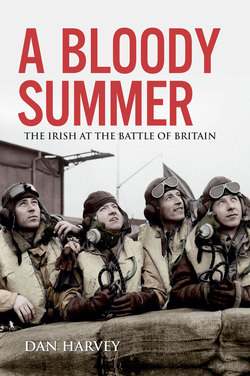Читать книгу A Bloody Summer - Dan Harvey - Страница 13
На сайте Литреса книга снята с продажи.
Оглавление3
AIR SUPERIORITY
The single element likely to seriously impede and even prevent the Germans from a successful invasion of southern England had been identified by their military planners. It existed in the third dimension, introduced with the development of flight: it was the British air threat; the RAF’s ‘fighter shield’. This source of strength was the British Armed Forces’ centre of gravity, the capability from which its military force derived its freedom of action, moral and physical strength, and its will to fight. In short, the RAF stood in the way of German victory in Britain, and throughout all of Europe.
Control of the sky, command of the air; the capacity to fly unhindered over the Channel and the southern English landmass would greatly facilitate victory in Germany’s intended invasion of Britain.
If Hitler could not achieve control of the air, then the Germans could not provide secure protection for its invasion force. Commanders on the ground now had to consider what was above the battlefield and what effect it would likely have on their operations. It wasn’t simply a matter of having air assets of their own – they had to dominate their enemy’s assets; they had to render their air threat redundant.
Gaining air superiority over the RAF would allow the German military commanders to shape the future battle space and better succeed in their next step: the sole concentration of all Nazi expansionist forces on the upcoming Eastern Front campaign against Russia. But first there was the present predicament: to quell and conquer an unbowed Britain. Before German land forces could invade selected beaches along the south coast of England, a plan known as Operation Sea Lion (Unternehmen Seelöwe), control of the sky had to be claimed by physical force.
A debate has occurred among historians regarding Hitler’s actual intent to invade Britain; some argue that it was a pressure tactic designed to encourage Britain to seek terms without fighting. It may well be, however, that his intentions had always been aggressive. Not only had he plans prepared to invade England, but there existed a plan to invade Ireland, too. In 1946, one year after the war in Europe had come to an end, an Irish American who had fought with the United States Army called to the Irish Consul General in New York and presented him with a set of books and documents dealing with various aspects of Irish life – its history, economy, geography and topography. He had taken these items from the headquarters of the Luftwaffe in Bavaria after it had been captured. What these items amounted to were plans for the invasion of Ireland, known as Fall Grün (Case Green). The Irish military authorities, however, had already known of Germany’s specific intentions as far back as 1942 when a similar set of documents ‘came into the possession’ of the Irish government. The section of the plans entitled ‘General Military Estimate’ was supported by photographs of important installations and industrial centres. Maps were also prepared, which emphasised the rough terrain of the Irish coastline. The invasion, if ordered, was to take place by sea. Five to six German divisions were to land on a broad front between Cork and Waterford; the area between Cork and Cobh was listed as a specific gateway, described as ‘Offering itself especially for the case of a peaceful or completely surprise landing, in which the considerable natural obstacle of the hinterland can be overcome before the development of any strong enemy counter operation.’
Retrospective academic analysis is important in asserting the facts with the support of documentation. It is instructive, over time, to challenge the generally accepted view. This is both healthy and helpful; such arguments can broaden the perspective of how we view historical events. However, it is also constructive to bear in mind the context of the times: what people were faced with, what they believed in, and how this informed their reactions. Historical evidence does not, therefore, necessarily lead to a greatly altered regard for contemporary accounts. It was known that Hitler would have favoured a British capitulation without committing troops; it is also true that he would welcome an ‘easy’ victory with little fighting effort. From the British perspective, that a ferocious and brutal battle for air superiority had to be fought if sovereignty, freedom and democracy was to be defended is irrefutable. The Battle of Britain – indeed, the Battle of Britain and Ireland – was fought on these grounds.
That the Luftwaffe’s drive to secure air superiority had to be deterred is clear; the threat their bombers and fighter formations posed was real. The battle’s eventual outcome was a necessary and proud victory, and men from Ireland played a part in this victory.
It should also be borne in mind that Reich Marshal Hermann Goering and the Luftwaffe were confident of securing a victory. After all, they had cleared the skies of all enemy aircraft in the countries they had previously invaded in their expansionist campaign. Everything that had occurred to date was evidence that their winning ways would continue. The German Navy, however, was a little more circumspect and wary of the still-powerful Royal Navy. They correctly believed that it was tactically unsound to progress their invasion plans until permanent command of the air was secured. The Germans constructed new airfields in the Netherlands, Belgium and France in readiness for the encounter ahead. If air superiority was a prerequisite for the invasion of England, then the harsh reality was that they were going to do their best to secure it.
